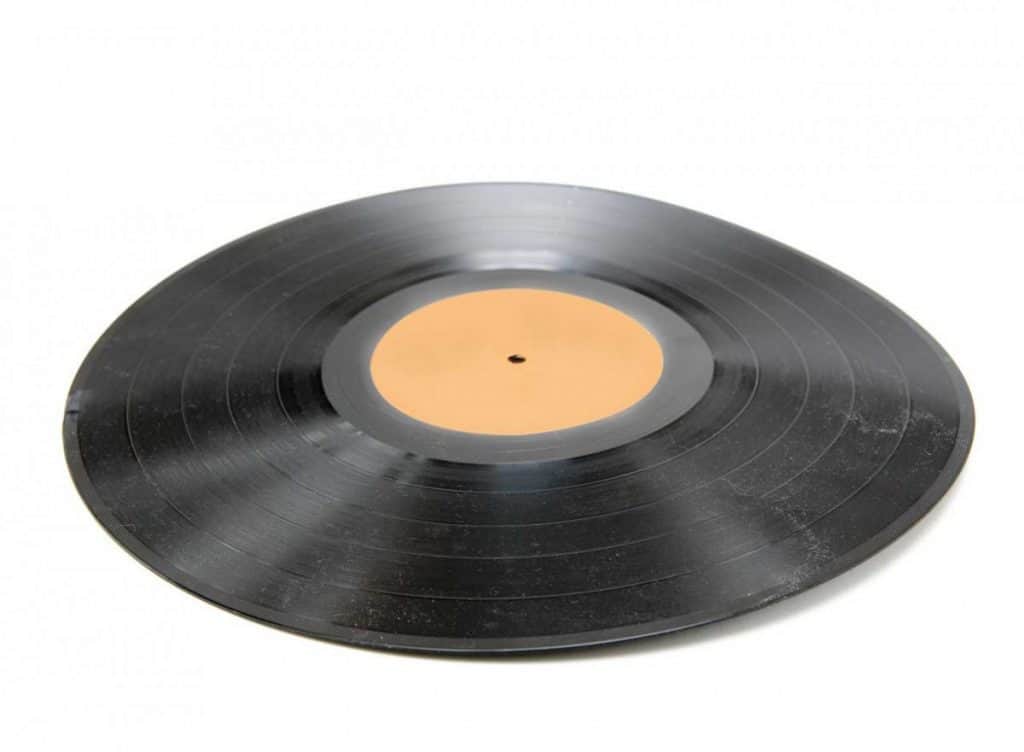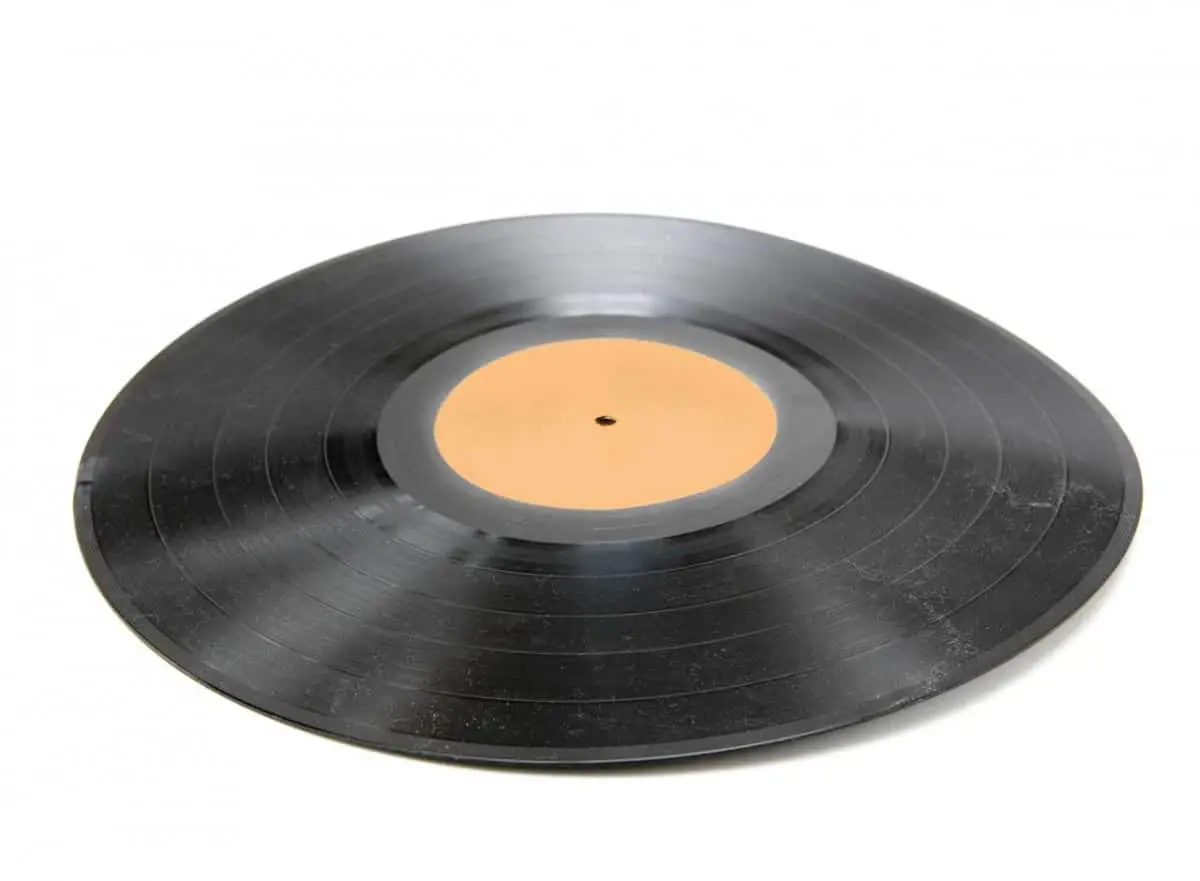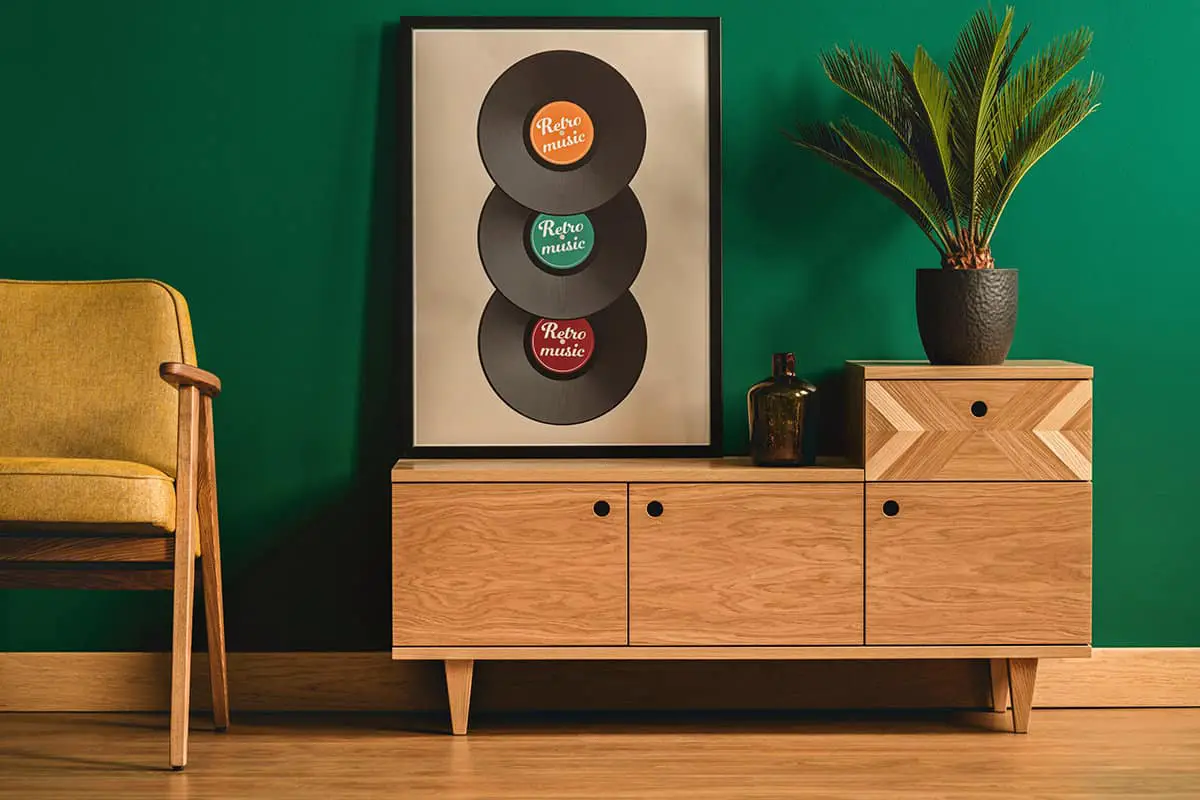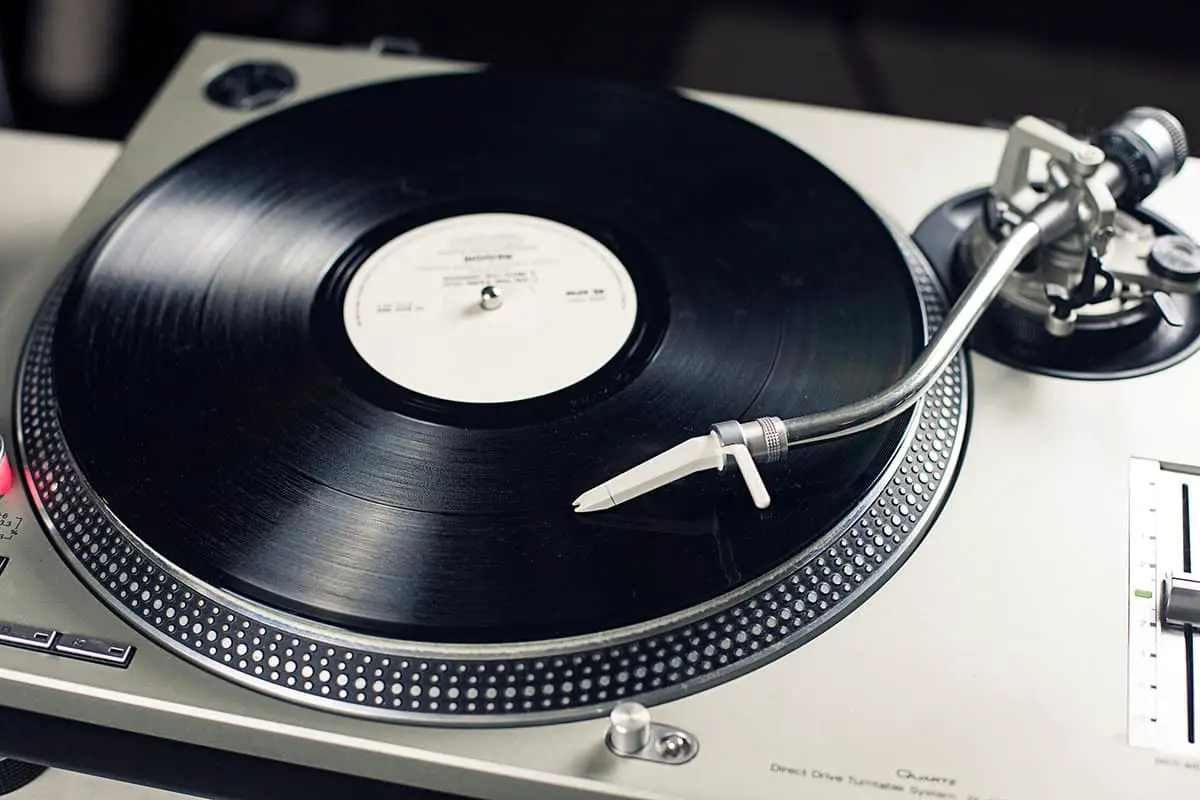This post contains affiliate links.

At what temperatures do records warp? Warping is one of the signs of poor vinyl record keeping. But what temperature levels cause the warping process? This article is here to give you the answers to help keep your records alive and well.
Here’s a general rule of thumb that you can use to keep your records in the proper storage conditions:
- Below 0°C, records will turn brittle and start to break.
- At 140°F, warping will occur
- Over 100°C or 212°F melting will occur on vinyl records.
- At room temperature, 65°F or 70°F is an ideal storage temperature.
For more information, be sure to keep reading. This article will delve deeper into the science behind records and how they are affected by heat.
Table of Contents
At What Temperature Do Records Warp?
Record warping is a pain in the neck for a lot of record owners. What causes warping? There are two reasons why record warping occurs:
Intense heat exposure
Improper record keeping (You should store your records vertically and not flat)
In my experience, records tend to warp at around 140°F. Any higher than that, probably at the boiling point of water, the record will melt. Another interesting thing about heat and records is that you will require heat to restore the record after warping.
Records can be pretty fragile things, and like anything else that’s not maintained or stored correctly, they will break or wrap.
What’s The Science Behind Vinyl Records And Heat?
It seems easy to share a number on the temperature scale, but it would be more interesting to share how the process works from a scientific perspective.
Firstly, it’s best to understand the consistency of records.
What Makes Up Vinyl Records?
When purchasing records, you’ll come across records made of different types of materials. These materials are the most commonly used in record manufacturing:
- Shellac
The earliest version of records consisted of shellac. The earliest record versions date back to the 1800s. It’s that far back. Manufacturers would create records from cardboard and fiber then finally coat the records with shellac resin.
Shellac records or 78s are the most fragile records. They break easily and can turn quite brittle if not well maintained.
- PVC
PVC is short for polyvinyl chloride, and it’s a form of plastic. PVC makes up 12% of the total demand for plastics. Records made of PVC are known as vinyl records. These types of records are the more evolved version of shellac records. They are more durable than shellac; however, they are prone to wrapping when exposed to heat.
Here are some of the properties of PVC:
- It has a melt temperature of 212 – 500 °F (100 – 260°C).
- PVC has a heat deflection temperature (HDT) of 92 °C (198 °F).
- The softening point of PVC is between 176°F and 183°F (80°C-84°C)
- The chemical formula of PVC is (C2H3Cl)n (just a little side note for those interested readers.)
Apart from the chemical formula, the numbers mentioned look eerily familiar. PVC-made records are the most common type of record. PVC is cheap and readily available.
The fact that vinyl records are cheap and accessible makes it easier for both manufacturers and buyers. It also means that you most likely will have vinyl records in your collection.
- Colored vinyl
As the name suggests, it refers to vinyl records in different colors. Mostly popular in the 1970s, they are still vinyl records. What differentiates them is the color on the surface of the record.
What Are The Parts Of A Vinyl Record?
Did you know that records consist of different parts? If not, don’t worry. Here are the parts of a record, and it comes with an image to boot:
- Lead-in groove
- Recorded grooves
- Dead Wax/End groove
- Center label
- Spindle hole
When you expose a record to high temperatures, you will notice warping along the recorded grooves. The center label doesn’t consist of PVC, so you’ll find that it won’t warp like the outer layers of the record.
Is It Bad To Leave Vinyl Records In The Heat?
Yes, it is terrible to leave your vinyl records in heat. High temperatures cause warping in records, and eventually, the records will melt. Sometimes, warping is reversible, but it can get to the point of no return, and the record is no longer usable.
Shellac records are incredibly fragile, and if stored or placed in unhealthy conditions for the record, it won’t take long for them to break.
PVC or vinyl records are more durable than shellac records. However, they are weak to increased temperatures. They will warp if the temperatures exceed a certain level. Not only that, but they are also capable of melting.
Vinyl collectors advise keeping your records in a clean, cool, and dry place that won’t negatively affect the record.
Are You Interested In What Other Like-minded Individuals Are Asking? Here Are Some Incredibly Helpful Faqs.
1. Is the warping and melting of records two different things?
Yes, warping and melting are two different things. Warping is the bending of records due to an increase in temperatures. Warping is also a reversible process in some cases. Melting, as the word suggests, the record turns from a solid to a liquid form.
Warping also has a different temperature than melting. Warping occurs at 140°F (60°C), while melting occurs at 212°F (100°C). Remember that once the record has melted, you cannot restore or reverse it. The heating process will completely ruin the record, and a new one will have to take its place. It’s sad, but it is what it is.
2. Is it recommended to ship records in the summer?
Summer is a glorious time of the year for some people but not others. Thanks to online stores and delivery, everything is a lot more convenient. But that doesn’t mean that delivering records during summer will be the easiest thing for record owners this summer.
If you’re planning to order records at any time during summer, it would be best to stop and take several seats back. There are no specialized solutions to delivering records in the summer that won’t protect the records from warping or even melting.
Deliveries take time, and sometimes, the package can be left outside your doorstep for hours before you remember that your new records are in-bound.
Its recommended not to order and have records delivered during summer. The outcome may cost you time, money, and joy. It’s not worth it. Choose to either have an in-store pickup or wait till summer’s out and with a click of a button, you can order your favorite records.
3. Will the heatwave warp my records?
Yes, leaving your records exposed during a heatwave will cause them to warp. As long as you store your records in a cool and dry place, your records are unlikely to warp. That’s the name of the game.
However, if you leave your records exposed to the heat or the storage environment is not conducive to the record’s material, they will most likely warp.
Records are fragile pieces of plastic. The Center for Climate and Energy Solutions shared that the average temperature in a heatwave is 90°F. This temperature is past the peripheral point where PVC starts softening.
A little longer at that temperature and warping will not be a dream anymore. It will be a harsh reality for both you and your records. In my experience, it should take half an hour for the warping to start if your records will remain at that temperature for that specific amount of time.
Leaving it any longer may melt the records.
Related articles
You might be interested in some other articles that I wrote about warped Vinyl Records and how to store them. Take a look here:
- Will A Warped Record Damage The Stylus
- Is It Normal For Vinyl To Be Warped?
- Is It Ok To Play A Warped Record? (Answer Here)
- What Temperature Can Vinyl Records Withstand? We Have The Answer.
- Can Records Be Stored Horizontally?
Sources
1.Jenna Miles, The Beginner’s Guide to Vinyl Records: How to Build, Maintain and Experience a Music Collection in Analogue (Massachusetts: Adams Media,2017) 256.
2.Record Player Expert, Vinyl Temperature Guide, Record Player Expert, Accessed 29th July 2021.
3.Yu, Jie & Sun, Lushi & Ma, Chuan & Qiao, Yu & Yao, Hong. (2015). Thermal degradation of PVC: A review. Waste Management. 48. 10.1016/j.wasman.2015.11.041.
4.Saliu Adelakin Durosinmi, Mechanical and Structural Changes of PVC when Subjected to Heat, Arcada,
5.Center for Climate and Energy Solutions, Heat Waves and Climate Change, Center for Climate and Energy Solutions Accessed 29th July 2021.
6.Vinidex, Polyvinyl Chloride, Vinidex Accessed 29th July 2021.
VacationVinyl.com is a participant in the Amazon Services LLC Associates Program, an affiliate advertising program designed to provide a means for sites to earn advertising fees by advertising and linking to Amazon.com. We also participate in other affiliate programs which compensate us for referring traffic.





